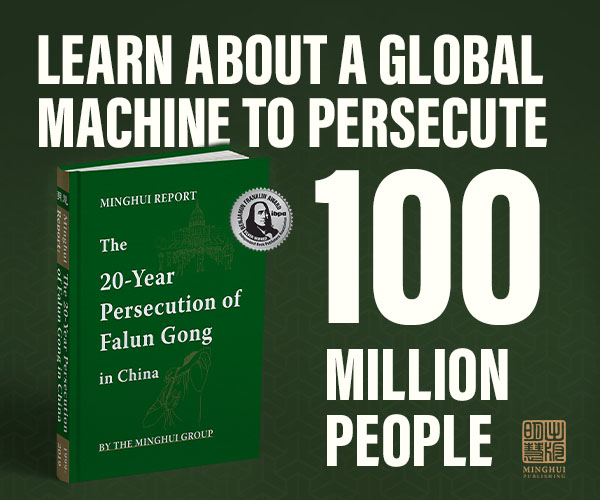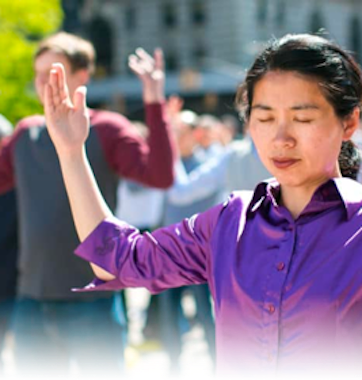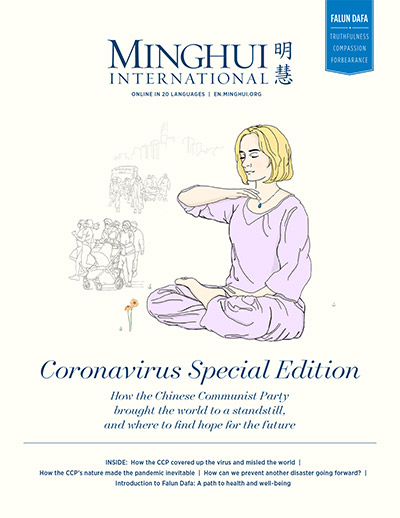(Minghui.org) COVID cases have exploded in China since the Chinese Communist Party (CCP) abruptly ended the zero-COVID policy. Almost all hospitals are packed with COVID patients, and pharmacies are running out of fever and cold medicines. Basic services such as express delivery have essentially stopped. Hardly any government agencies are still keeping normal hours, including the police, courts, and procuratorial (procuratorate) system. When some trials were still held as scheduled, everyone who showed up had tested positive for COVID, from the prosecutor to the judge, and from the lawyer to the plaintiff and defendant.
Ordinary citizens were surprised by the sudden surge of new cases. Some officials said no one could escape the virus and urged people to get infected earlier since they’d catch the virus anyway. They also claimed that the virus was just like a common flu. But some citizens experienced high fevers of up to 1040F with headaches and pain in the bones. Some women said it was more painful than delivering a baby. Some had throat pain that was so bad that it felt like being cut with a knife. There were also people whose hands ached so much as if being pricked with countless needles. Other symptoms included rashes all over, and lower back pain. Many criticized those officials for spreading lies to mislead the public about the severity of the infection.
Failed Zero-COVID Campaign
The Chinese Academy of Sciences and Chinese Academy of Engineering had a total of five academicians who died on December 23. Among them was 57-year-old Jiang Hualiang, whose team claimed that the Chinese medicine, Shuanghuanglian oral liquid, could suppress COVID.
Videos and photos circulating online showed that many COVID patients had lost their lives.
Authorities in Zhejiang Province announced at a press conference on December 25 that the highest daily number of patients who visited fever clinics in the past week was 408,400, which was 14 times the normal visits. Yu Xinle, Deputy Director of the Zhejiang Health Commission, said that the daily number of new infections in the province had exceeded one million. Based on recent data and survey results from various communities, he predicted that this new wave of COVID outbreaks in Zhejiang would peak soon with two million infections expected per day. He also said that the peak may last about a week.
Large-scale infections had been detected in 16 districts of Beijing as early as November 27. Faced with the increasing cases and public protests, the regime ended the zero-COVID policy on December 7. With no warning or explanation, the three-year costly campaign against COVID abruptly stopped in China. No further plans were announced, leaving ordinary citizens to fend for themselves in the face of the highly infectious virus, including its omicron variant.
Surging Cases Throughout China
The local health commission of Qingdao City in Shandong Province announced on December 12 that the daily new cases in the area were between 490,000 and 530,000 (about 5% of the city’s population of 10 million). The cases increased at a rate of 10% on December 24 and 25. Officials said the peak has yet to arrive.
The Dongguan City Health Bureau in Guangdong Province announced on social media on December 23 that new infections were about 250,000 – 300,000 a day in the city of 10 million people, and the number was increasing at a faster rate every day. Based on mathematical modeling and expert assessment, the peak would arrive soon. This has created unprecedented pressure on medical professionals and facilities. Over 2,500 medical workers who were confirmed positive or having fever were still ordered to report to work.
The Financial Times cited two insiders as saying that China’s National Health Commission (NHC) held a meeting on December 21 and drew a bleak picture of the COVID situation. Sun Yang, a deputy director of China’s Centers for Disease Control and Prevention (CDC), said at the meeting that the new cases of infection on December 20 were 37 million, about 2.6% of China’s population of 1.4 billion. The national infection rate of 2.6% was consistent with the rates in Qingdao and Dongguan. Yang said the numbers still increased quickly nationwide, with over 50% of people in Beijing and Sichuan Province being infected.
A reporter from AFP also saw hospitals in Chongqing crowded with COVID patients, most of them elderly residents. Dozens of bodies were seen piling up at crematoriums.
Propaganda vs. Reality
The Chinese regime reported 4,103 cases on December 24 with zero deaths. This was about 0.01% of the NHC’s internally communicated tally for December 20 as mentioned in the Financial Times report. In Shandong Province, where Qingdao City is located, 31 cases were officially reported. Probably due to the ridiculous discrepancy, the NHC announced on December 25 that they would halt the publishing of daily COVID data.
Using data from all provinces in China, a Seattle firm, Institute for Health Metrics and Evaluation, estimated that one-third of the Chinese population, or close to 500 million, would be infected by the spring of 2023. “There’s no doubt that China is in for a bad couple of months,” said James Wood, an infectious-disease modeler at the University of New Wales in Sydney in a December 19 Nature article titled “China COVID wave could kill one million people, models predict.”
Despite the lift of the zero-COVID policy, some local governments have resumed testing (though optional, not mandatory), such as Shandong Province. Such testing may increase the infection rate, however. The reason is that the tests are usually done in such a way that different people’s specimens are pooled together for group testing and, if the result is positive, each individual in the group is then tested separately. The individual tests usually require people, including the ones who tested positive, to wait in line in close proximity, hence making it much more likely for people to catch the virus. When the zero-COVID policy was still in place, what happened most often was that everyone tested positive after the group test result was positive. Now that the testing is back, people worry about increased infection rates and many try all means to get testing kits in order to test at home instead of going through the government-run testing sites.
Once a person tests positive, COVID would quickly spread to the rest of the family. Many people suffered symptoms so severe that they could hardly sleep at night. Officials and neighborhood administration personnel offered no help for securing medications and other medical care.
Silent Officials and Worried Residents
Out of frustration, Chinese netizens often circulate information on positive cases. In the beginning, the 50-Cent Party members (who are paid to post pro-CCP messages online; the pay rate used to be 50-cent per post) defended the regime, but they quickly went quiet as more citizens blamed them for misinformation. Those lower-level officials who always tried to save face for the CCP and sang the praises of the CCP were nowhere to be seen (in-person or online). “The neighborhood administration offices are also closed, guess they are all infected too,” one person wrote online. “Finally they’ve stopped bullying us.”
Zhang Wenhong, Director of the Department of Infectious Diseases at Huashan Hospital affiliated with Fudan University, said in a public speech on December 22 that the elderly were vulnerable to silent hypoxia (alarmingly low oxygen level). Within one day of his speech, oxygen machines on major e-commerce platforms were sold out, reported the Central News Agency on December 24.
Three years have passed since the pandemic broke out and the CCP continues to cover up information in China, as it did in early 2020. This left the world clueless as to how to react to the situation. The CCP downplayed the COVID risks and claimed that the omicron variants' mortality rate was 0.1% (on par with the flu). “WHO (the World Health Organization) is very concerned over the evolving situation in China with increasing reports of severe disease,” remarked a WHO official on December 21.
The CCP is known for censorship and information control. A 2016 Harvard study estimated that the 50-Cent Party posted about 488 million social media posts per year to misguide the public. As many members of the internet army become infected and lose confidence in the CCP, the information control has become paralyzed and certain facts are surviving the censorship and are now being revealed to the ordinary citizens, said experts.
All content published on this website are copyrighted by Minghui.org. Minghui will produce compilations of its online content regularly and on special occasions.
Category: News & Events










